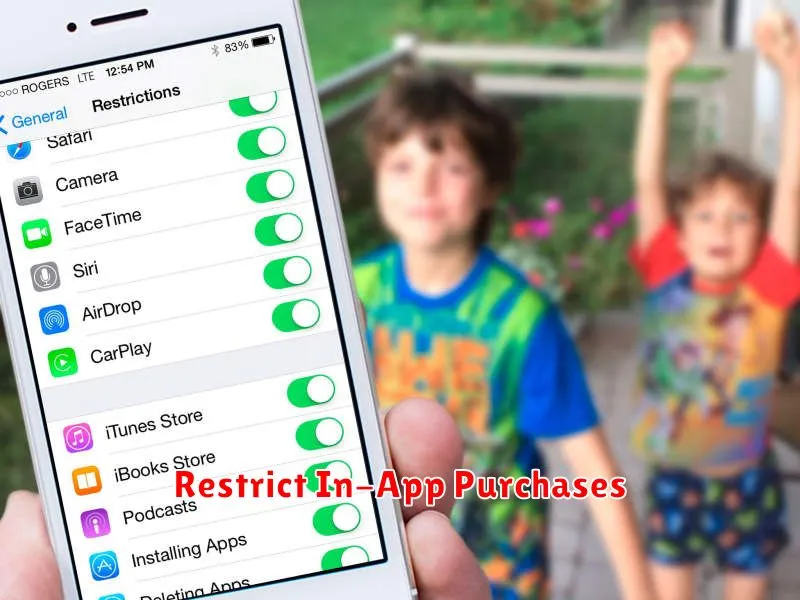In today’s digital age, smartphones have become ubiquitous, and children are increasingly exposed to them at a younger age. While these devices offer numerous educational and entertainment opportunities, it’s crucial for parents to ensure their child’s smartphone experience is both safe and productive. This article will guide you through the essential steps to make your smartphone kid-friendly, covering topics from setting up parental controls and content filters to establishing healthy usage habits. Learn how to effectively manage screen time, select age-appropriate apps, and protect your child from online risks, ultimately creating a positive and enriching smartphone experience for your kids.
Making a smartphone kid-friendly involves more than just downloading a few educational games. It requires a proactive approach to smartphone management, focusing on safety, responsible usage, and open communication with your child. This guide provides practical advice on configuring parental controls, utilizing monitoring apps, and educating your children about online safety. By implementing these strategies, you can create a secure digital environment for your kids, allowing them to enjoy the benefits of technology while minimizing potential harms and fostering healthy digital habits from an early age.
Enable Parental Controls
Activating parental controls is a crucial step in ensuring your child’s online safety. These controls offer a range of features designed to restrict access to inappropriate content, manage screen time, and monitor app usage.
Most modern smartphones include built-in parental control options within their settings. Look for keywords such as “Digital Wellbeing,” “Screen Time,” or “Family Link.” These settings allow you to customize restrictions based on your child’s age and maturity level.
If your device lacks comprehensive built-in controls, consider downloading a dedicated parental control app from your device’s app store. These apps often provide advanced features such as content filtering, location tracking, and app blocking.
Once enabled, be sure to set a strong passcode or PIN to prevent your child from bypassing the restrictions.
Use Screen Time Management Apps
Screen time management apps offer a powerful way to control your child’s phone usage. These apps allow you to set daily or weekly limits for specific apps or app categories, helping prevent excessive screen time. Many also offer features like scheduling downtime, where access to certain apps is blocked during specific hours, such as bedtime or during school.
Some apps even allow you to monitor app usage, providing insights into which apps your child uses most frequently. This information can be valuable in understanding their digital habits and making informed decisions about screen time limits. Consider using these apps as a tool to foster healthy digital habits and promote a balanced lifestyle for your child.
Restrict In-App Purchases

In-app purchases can quickly rack up significant charges, especially with children using devices. Disabling or restricting these purchases is a crucial step in making your smartphone kid-friendly.
Most operating systems offer built-in features to manage in-app purchases. Typically, these settings can be found within the device’s main settings menu, often under “Screen Time” or “Parental Controls.” Look for options to require a password for every purchase, or even to completely block in-app purchasing.
Requiring authentication for purchases acts as a deterrent and prevents accidental spending. Complete blocking provides the strongest protection against unwanted charges.
Create Separate Profiles
Most modern smartphones offer the ability to create separate user profiles. This is a powerful tool for managing a child’s access to your device. By establishing a dedicated profile for your child, you can effectively control the apps, data, and settings they can access. This prevents accidental changes to your own settings and limits their exposure to inappropriate content.
Within the child’s profile, you can curate a selection of age-appropriate apps and games. Restrict access to the web browser or apply content filters to ensure safe browsing experiences. You can also disable in-app purchases to avoid unexpected charges. Using separate profiles allows you to confidently share your device knowing that your personal information and settings remain protected.
Use Educational and Age-Appropriate Apps
Choosing the right apps is crucial for a kid-friendly smartphone experience. Prioritize apps designed specifically for children that offer educational content and age-appropriate activities. Look for apps that focus on skill-building, such as literacy, numeracy, or creativity.
Always check the app’s age rating and read reviews before downloading. Consider using parental control features within app stores to restrict access to inappropriate content and manage in-app purchases. Actively monitor your child’s app usage and engage in conversations about their digital experiences.
Lock Unnecessary Features
Limiting access to non-essential features is crucial for creating a safe digital environment for children. Restricting app downloads, in-app purchases, and access to specific apps like web browsers can prevent accidental spending and exposure to inappropriate content. Most smartphones offer built-in parental control settings to manage these features.
Consider disabling features like location services when not needed for approved apps. This protects your child’s privacy. Additionally, locking down cellular data usage prevents unexpected charges and helps manage screen time by limiting access to online games and streaming services when not connected to Wi-Fi.
Check App Ratings Before Downloading
App ratings provide valuable insight into an app’s content and user experience. Always check the app’s rating before downloading it onto your child’s device. Ratings often reflect the presence of mature themes, in-app purchases, or potential privacy concerns.
Pay close attention to the age recommendations associated with the rating. While not foolproof, these recommendations can provide a general guideline for age appropriateness. Look for apps specifically designed for children or those with a clear educational focus. Consider utilizing parental control features offered by app stores to filter and restrict downloads based on age ratings.

